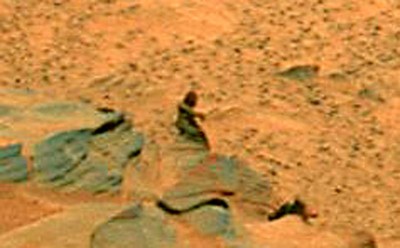Martian structure reveals signs of life on Red Planet
By FnF Desk | PUBLISHED: 20, Aug 2014, 16:14 pm IST | UPDATED: 20, Aug 2014, 16:19 pm IST
 Washington:
Washington: A new mineral-rich structure discovered from a Martian meteorite has led scientists to believe that there may be niche environments on Mars subsurface that support life.
The ovoid structure discovered in the Nakhla Martian meteorite is made of nanocrystalline iron-rich clay and contains a variety of minerals.
It shows evidence of undergoing a past shock event from impact, with resulting melting of the permafrost and mixing of surface and subsurface fluids, researchers said.
"The findings illustrate the importance of correlating different types of datasets when attempting to discern whether something in rock is a biosignature indicative of life," said Sherry L. Cady, editor-in-chief of the journal Astrobiology and chief scientist at the Pacific Northwest National Laboratory in Washington, DC.
To reach this hypothesis, Elias Chatzitheodoridis from National Technical University of Athens, Greece and Sarah Haigh and Ian Lyon from University of Manchester used modern tools like electron microscopy and spectroscopy to analyse the ovoid structure.
Based on the results, they presented the competing hypotheses for how this ovoid was formed, leading to a possible hypothesis that the Red Planet's subsurface may support support life.
"The research strategy revealed a significant amount of information about the potential for life to inhabit the subsurface of Mars," Cady added.
 Washington: A new mineral-rich structure discovered from a Martian meteorite has led scientists to believe that there may be niche environments on Mars subsurface that support life.
Washington: A new mineral-rich structure discovered from a Martian meteorite has led scientists to believe that there may be niche environments on Mars subsurface that support life.